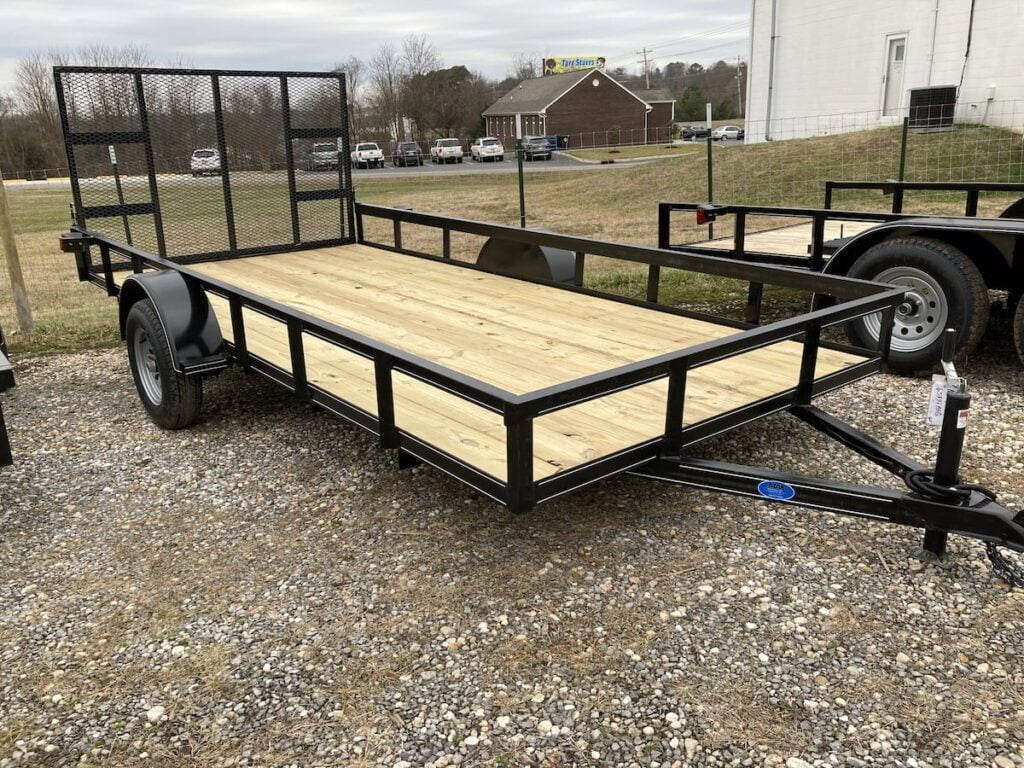Transporting a motorcycle on a trailer requires careful attention to detail and proper securing to ensure both the safety of the rider and the integrity of the bike. Whether you’re moving your motorcycle to a new location or heading out for a weekend ride, here’s a step-by-step guide on how to safely strap a motorcycle to a trailer:
1. Check Trailer Weight Capacity:
Before loading your motorcycle onto the trailer, ensure that the trailer’s weight capacity is sufficient to accommodate the combined weight of the motorcycle, accessories and any additional cargo. Exceeding the trailer’s weight capacity can lead to instability and safety hazards.
2. Prepare the Trailer:
Inspect the trailer to ensure it’s in good condition, with no loose bolts, damaged parts or rust that could compromise safety. Check that the trailer hitch is properly connected to the towing vehicle and that the trailer is level and securely attached.
3. Position the Motorcycle:
Carefully drive your motorcycle onto the trailer, using ramps if necessary to load it safely. Position the motorcycle in the center of the trailer with the front wheel facing forward. Ensure there’s enough space between the motorcycle and the trailer’s sides to prevent contact during transit.
4. Secure the Motorcycle:
Once the motorcycle is in position, it’s time to secure it to the trailer. Use a combination of straps, tie-downs and wheel chocks to immobilize the motorcycle and prevent it from shifting during transit.
5. Use High Quality Straps and Tie-Downs:
Don’t skimp on this—you don’t want the strap to snap and your bike to fall. Invest in high-quality straps and tie-downs specifically designed for securing motorcycles. Avoid using ropes or bungee cords, as they may not provide adequate support and could fail during transit.
6. Secure the Front Wheel:
Attach straps to the front forks or handlebars of the motorcycle and secure them to anchor points on the trailer. Compress the front suspension slightly to stabilize the motorcycle and prevent it from bouncing during transit.
7. Secure the Rear Wheel:
Attach straps to the rear wheel or frame of the motorcycle and secure them to anchor points on the trailer. Ensure the rear wheel is firmly secured to prevent the motorcycle from tipping or sliding during transit.
8. Use Wheel Chocks:
Consider using wheel chocks to stabilize the motorcycle’s wheels and prevent them from rolling during transit. Place wheel chocks in front of and behind the motorcycle’s wheels and secure them to the trailer floor to provide additional stability.
9. Double-Check the Straps:
Before hitting the road, double-check that all straps and tie-downs are securely fastened and tightened to the appropriate tension. Give each strap a firm tug to ensure it’s properly secured and that there’s no slack that could compromise safety.
10. Monitor Weather Conditions:
Keep an eye on weather forecasts and road conditions before embarking on your journey. Adverse weather factors such as heavy rain, strong winds or icy roads can affect towing stability and increase the risk of accidents. Consider postponing your trip if weather conditions are unfavorable.
11. Practice Safe Driving Techniques:
When towing a trailer with a motorcycle, adjust your driving technique to accommodate the increased weight and size of the vehicle combination. Drive at a moderate speed and maintain a safe following distance while avoiding sudden acceleration, braking or sharp turns to ensure stability and control.
12. Perform Regular Safety Checks:
Periodically stop during your journey to perform safety checks on the trailer and motorcycle. Inspect the straps, tie-downs and anchor points to ensure they’re secure, and check for any signs of wear or damage that may require adjustment or replacement.
Legal Disclaimer: The information provided in this article is for general guidance purposes only. It is not intended as legal, safety, professional advice, or replacement for product manuals. Readers are advised to consult relevant authorities, manufacturers’ guidelines, and seek professional assistance for their specific circumstances and vehicles. The author and publisher disclaim any liability for actions taken based on the contents of this article.





